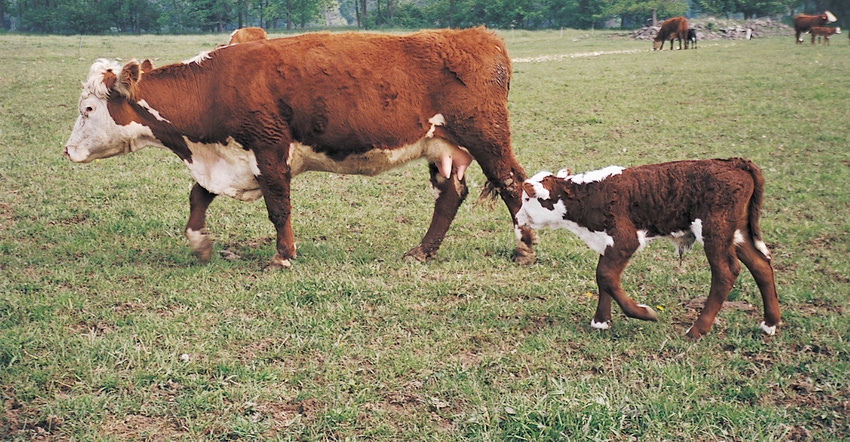January 27, 2017

Deciding whether or not to use a creep feeder can be a difficult management decision for beef producers.
They need to decide if creep feeding is economically feasible for their business. Creep feeding should be evaluated for the economics of cost of gain and potential additional income at the sale barn. Data suggests calves that are not creep-fed catch up to their creep-fed counterparts postweaning, so the greatest return on investment is if calves are sold at weaning.
Creep ration
Once a producer decides to creep-feed, a variety of management questions also need to be addressed. Deciding on a creep ration is key to profitability. Generally, spring-born calves are supplied all the nutrients they need from the dam and grazing. As the calf gets older, the dam produces less milk while the nutritional needs of the calf increases. A 100-pound calf requires 10 pounds of milk to meet its daily energy and protein requirements for growth. A 500-pound calf needs 50 pounds of milk to meet the same requirements.
The average beef cow produces about 13 pounds of milk a day at peak production (45 to 60 days after calving), so the older the calf gets, the less it gets from the dam and the more it relies on forage and grain to make up the nutritional gap. In addition, grazing forage quality decreases as summer progresses. Late summer and fall grasses lack the protein and energy a calf needs to efficiently gain weight.
A creep ration must be nutrient-dense and palatable. Pelleted creep rations are highly palatable and impossible for a calf to sort. Pelleted rations are also easily handled and have less waste.
Rations that are not pelleted must be dust-free and mixed so the calf cannot sort ingredients. For non-pelleted feeds, coarsely rolled or cracked grains, rather than finely ground, are best for rumen function. Bulky feeds such as oats or wheat should be included to protect from overeating.
Calves are born with an undeveloped rumen, but it begins to develop as soon as roughage is consumed. Young calves often explore their surroundings and only nibble on grasses and grains for the first six weeks of life. It is important to place a creep feeder near a shady area or where cows eat and drink to give calves time to explore the creep feeder while cows rest. Once calves understand there is a benefit to entering the creep feeder, it can be moved to other areas, if need be.
Creep feeders have pros and cons. Beef calves get a great start eating grain; however, without careful management, calves can get overconditioned. Generally, a high-protein feed will result in better gains than a high-energy diet. Data suggests that it takes 4 pounds of feed dry matter for 1 pound of gain on high-protein rations.
A high-energy diet can lead to overconditioned calves and can result in reduced prices at market. Replacement heifers fed a high-energy diet can develop fatty udder tissue that can result in decreased milk production. These fat deposits can occur in the heifer before 3 months of age and can have a lasting effect on future milk production.
Weighing the benefits and drawbacks of creep feeding can be a challenge. Increased weight, ease of weaning and proof that calves are bunk-broke are benefits at the sale barn. However, without providing the correct ration to calves, reduced milk production and decreased feed efficiency can make creep feeding more costly than beneficial. Each operation is different, and it is the producer’s decision to make the right choice for his or her calves.
Bjurstrom is the Kewaunee County Extension ag agent. This column is provided by the University of Wisconsin Extension’s Wisconsin Beef Information Center. Learn more at fyi.uwex.edu/wbic.
About the Author(s)
You May Also Like




